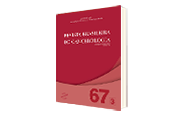Estudo Epidemiológico do Câncer Infantojuvenil no Hospital de Câncer de Cascavel Uopeccan entre os Anos 2000 e 2014
DOI:
https://doi.org/10.32635/2176-9745.RBC.2021v67n3.1224Palavras-chave:
Neoplasias, Criança, Adolescente, Estudos Epidemiológicos, Análise de SobrevidaResumo
Introdução: Estudos epidemiológicos de base hospitalar sobre o câncer infantojuvenil são importantes para mostrar o perfil dos pacientes assistidos pelo serviço. Objetivo: Avaliar o perfil clínico-epidemiológico e a sobrevida de pacientes na faixa etária de 0-19 anos atendidos no Hospital do Câncer de Cascavel Uopeccan (2000-2014). Método: Estudo transversal com avaliação de prontuários para os seguintes desfechos: sexo, idade, cor/raça, outras patologias, histórico familiar de câncer, domicílio, tipo da neoplasia, estadiamento, tratamento, metástases, recidivas, situação do paciente ao final da pesquisa. A estatística descritiva e os testes qui-quadrado e Kaplan-Meier foram aplicados. Resultados: Observou-se maior frequência para meninos (55,2%), faixa etária de 1-4 anos (36,3%), brancos (87%), domicílio urbano (81,6%), leucemia (35,8%) e quimioterapia (50,2%). Ocorreu metástase em 16,41% e recidiva em 22,38%. Não havia relato de histórico familiar de câncer em 47% dos prontuários. Outras patologias foram negadas em 58,9%. Ao final, 55,2% estavam vivos e sem doença. Houve associação estatisticamente significava entre menores de 10 anos com tumores renais e neuroblastoma; maiores de 10 anos com linfomas e neoplasias epiteliais malignas; e entre a situação atual do paciente com metástase, recidivas e estadiamento. Conclusão: Os pacientes analisados na presente pesquisa eram na maioria leucêmicos, do sexo masculino e faixa etária de 1-4 anos. A sobrevida global e a livre de doença foram, respectivamente, de 70,3% e 71,63%.









